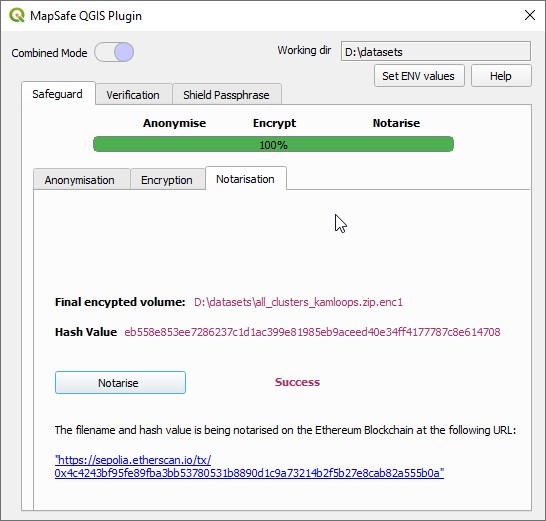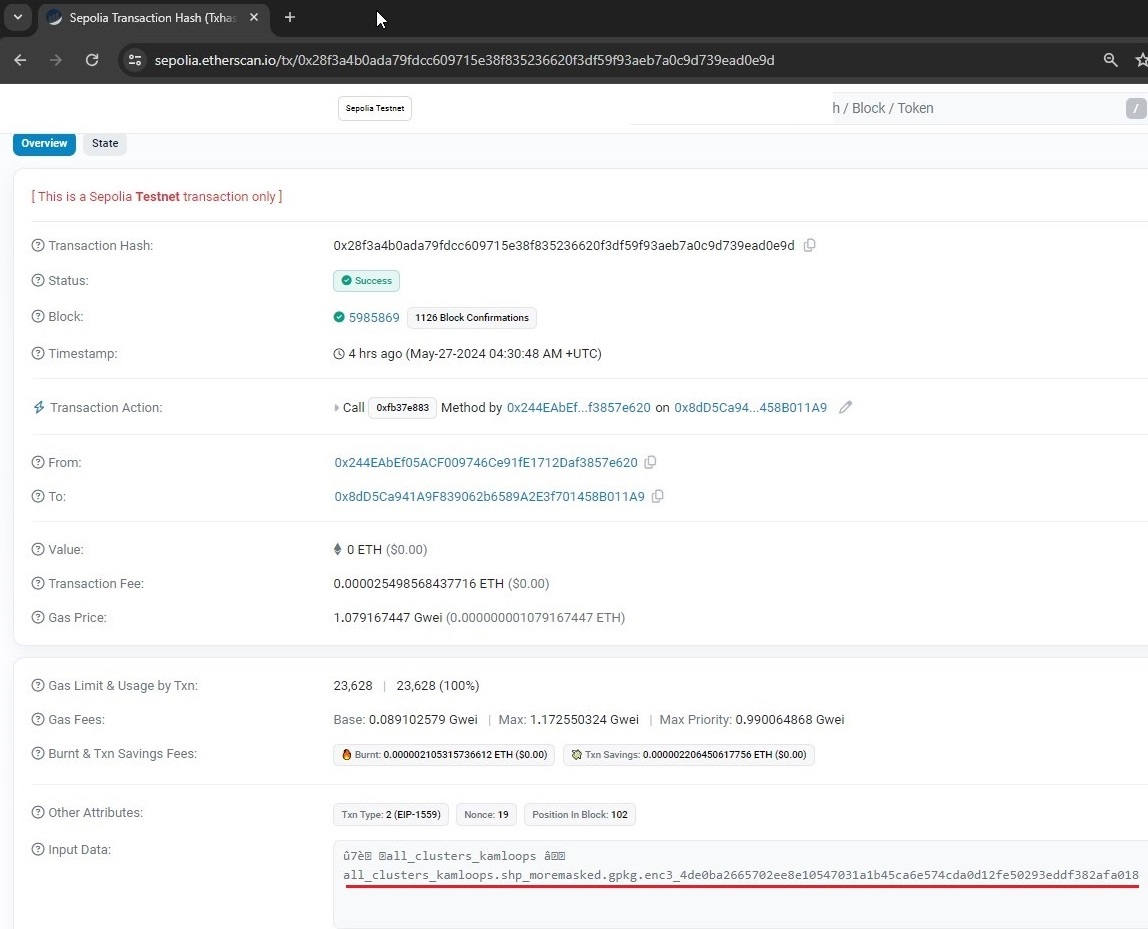Notarisation
In our approach, the encrypted volume is uniquely identified and represented by notarising its hash value as a
public record on the Ethereum Blockchain. First, the SHA256 cryptographic hash function is used to generate a hash
value of the encrypted file containing the original and/or obfuscated geospatial datasets. Since tampering of data even by a single bit
will be detected by this process, this process can be used to resolve arguments against any given contested encrypted
volume.
A blockchain address is a unique account for a user to carry out transactions on the blockchain, e.g. send and receive the assets in Ethereum. In our approach, each user requires a blockchain address using which they mint the hash value on the Blockchain. Users have to ensure that they have Ether in their account to pay for the transaction and can add Ether using their credit card via popular crypto-selling websites, e.g. coinbase.com.
The hash value is computed for the resulting encrypted volume. Thereafter, upon pressing the mint button, the filename and hash value of the encrypted file is submitted to the Ethereum blockchain to be stored as a public record of the geospatial dataset stored within.

Once the has value is minted, a url link to the Ethereum address where the data is stored as a public record is presented.

The notarization step mints the final encrypted volume's hash value on the blockchain -- completing our geoprivacy approach.
The filename and hash value are submitted for minting on the Ethereum blockchain and thereafter, forever exists as a public.
All intended recipients can use the Etherscan Sepolia Testnet Explorer to verify the encrypted volume's originality.